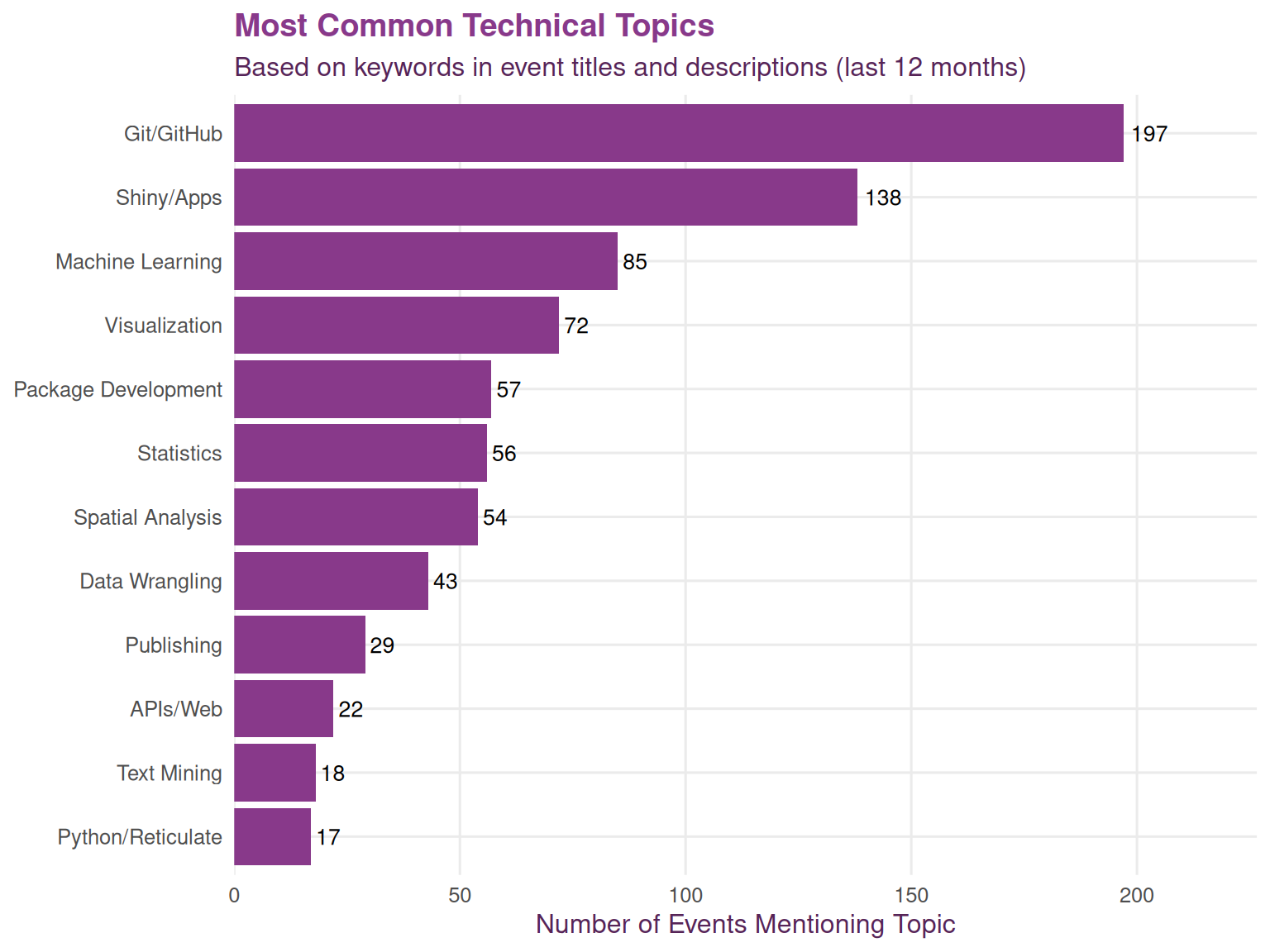
R-Ladies Topic Analysis
Event Content Trends and Popular Themes
Executive Summary
This report analyzes event titles and descriptions to identify popular topics, emerging trends, and content patterns across the R-Ladies network. Understanding what topics resonate with the community helps organizers plan relevant programming and identify content gaps.
Analyzing 309 events from the last 12 months to identify content themes and trends.
Popular Topic Categories
We identified technical topics by searching for relevant keywords in event titles and descriptions. This gives us insight into which R-related skills and tools are most frequently covered across the network.
The distribution of topics reflects both foundational R skills (data wrangling, visualization) and specialized applications (machine learning, spatial analysis). Topics appearing frequently indicate consistent community interest and organizer confidence in presenting this material.
Event Type Distribution
Beyond technical topics, we can classify events by their format and learning approach. Different event types serve different purposes: workshops provide hands-on practice, talks introduce new concepts, and social events build community connections.
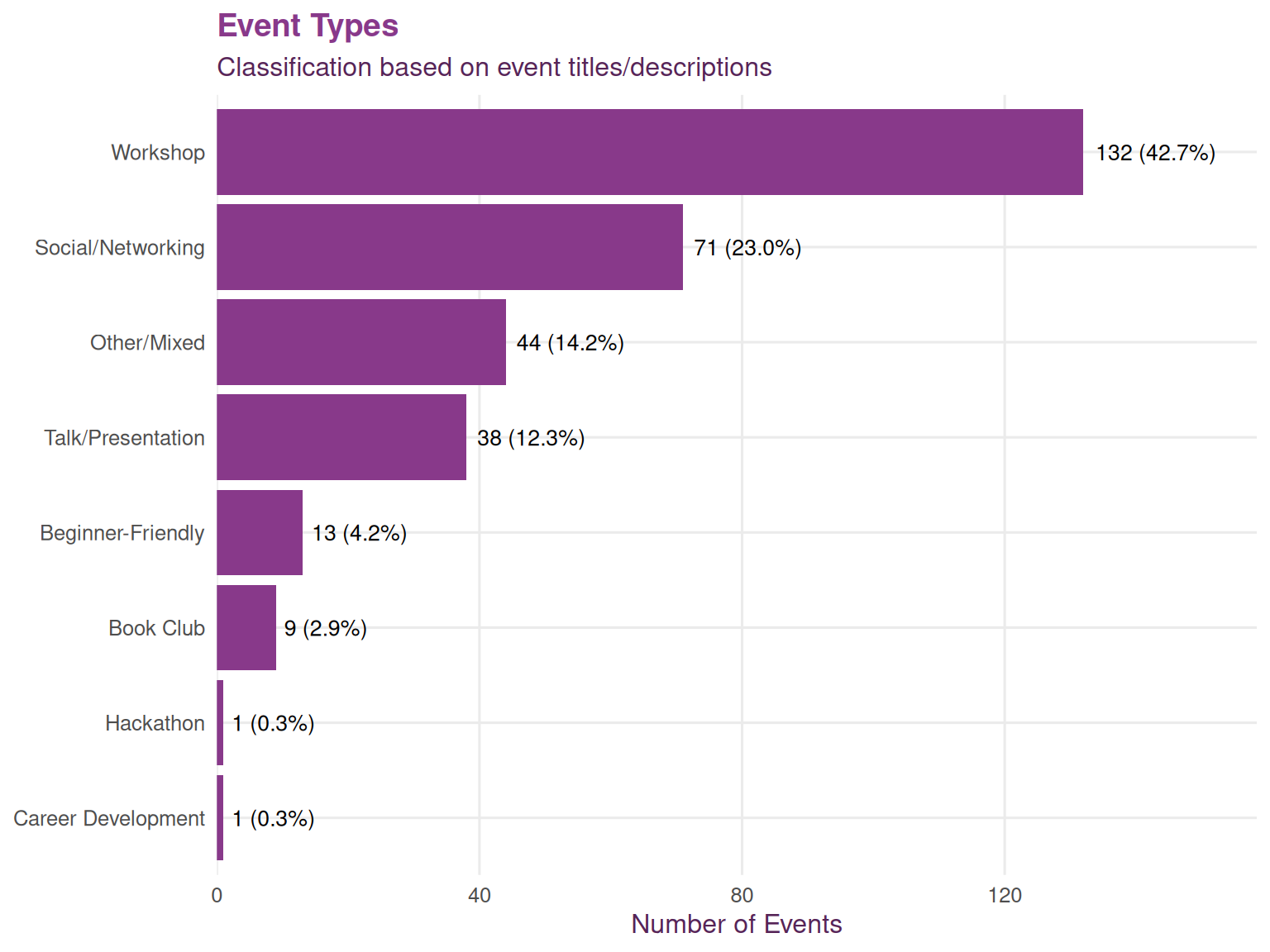
Understanding the balance of event types helps organizers assess whether they’re offering appropriate variety. A healthy mix typically includes technical learning opportunities alongside community-building activities.
Trending Topics Over Time
Topic popularity can shift as new tools emerge and community interests evolve. Tracking trends over time helps identify which topics are gaining or losing traction in the R ecosystem.
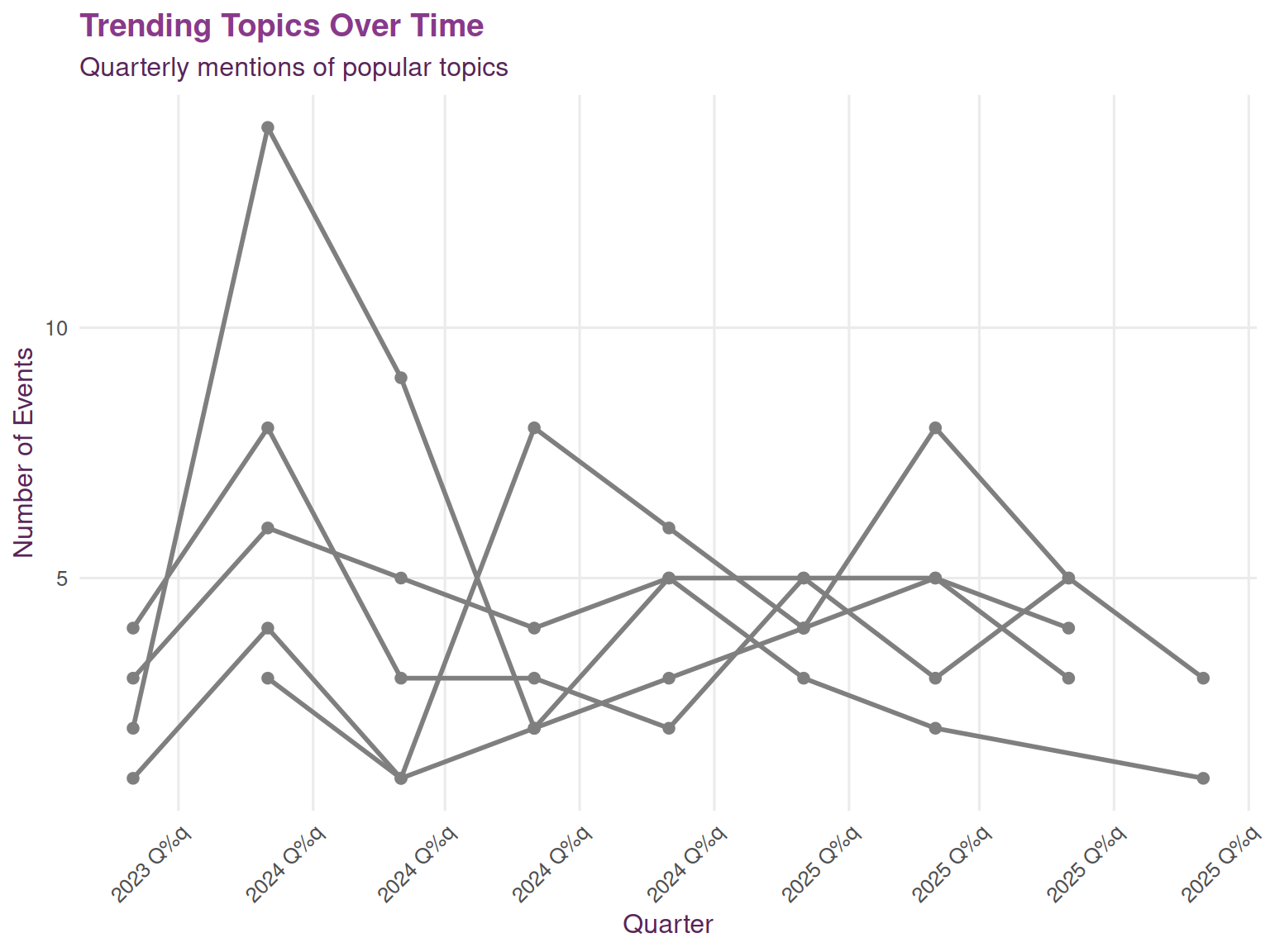
These trend lines reflect both the introduction of new tools (like Quarto) and sustained interest in established frameworks (like tidyverse and Shiny). Rising trends may indicate topics worth featuring more prominently, while declining trends might suggest saturation or shifting community needs.
Beginner vs Advanced Content
Explicitly labeling content difficulty helps attendees choose appropriate events and signals a chapter’s commitment to accessibility. The balance between beginner and advanced content affects who feels welcomed in the community.
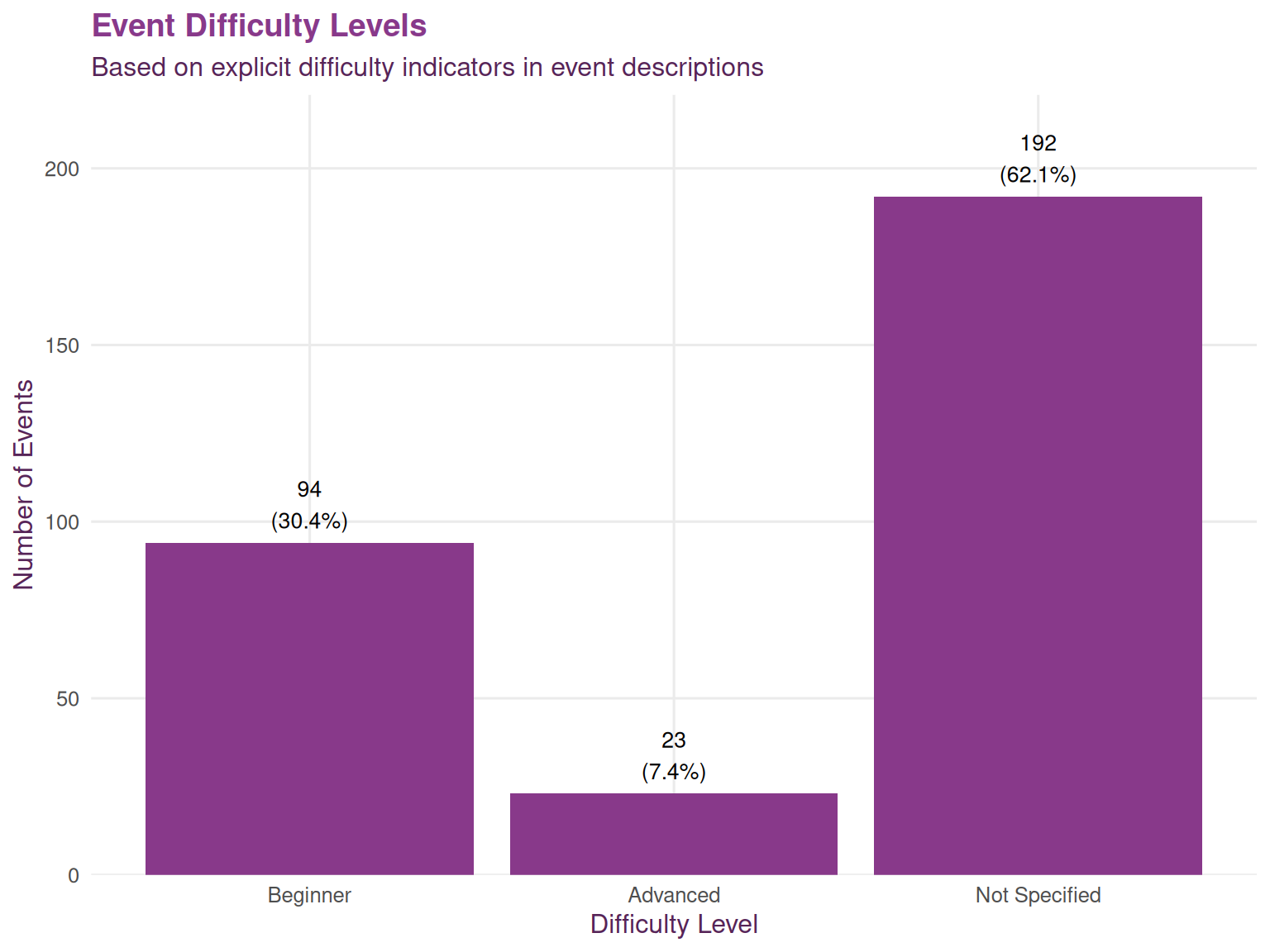
Events explicitly labeled as beginner-friendly (94 events, 30.4%) signal welcoming spaces for newcomers. The large number of unspecified events suggests an opportunity for organizers to more clearly communicate target audience levels.
Popular R Packages and Tools
Specific package mentions indicate which tools the community is actively learning and using. This information helps identify which packages have strong educational ecosystems and which might benefit from more tutorial content.
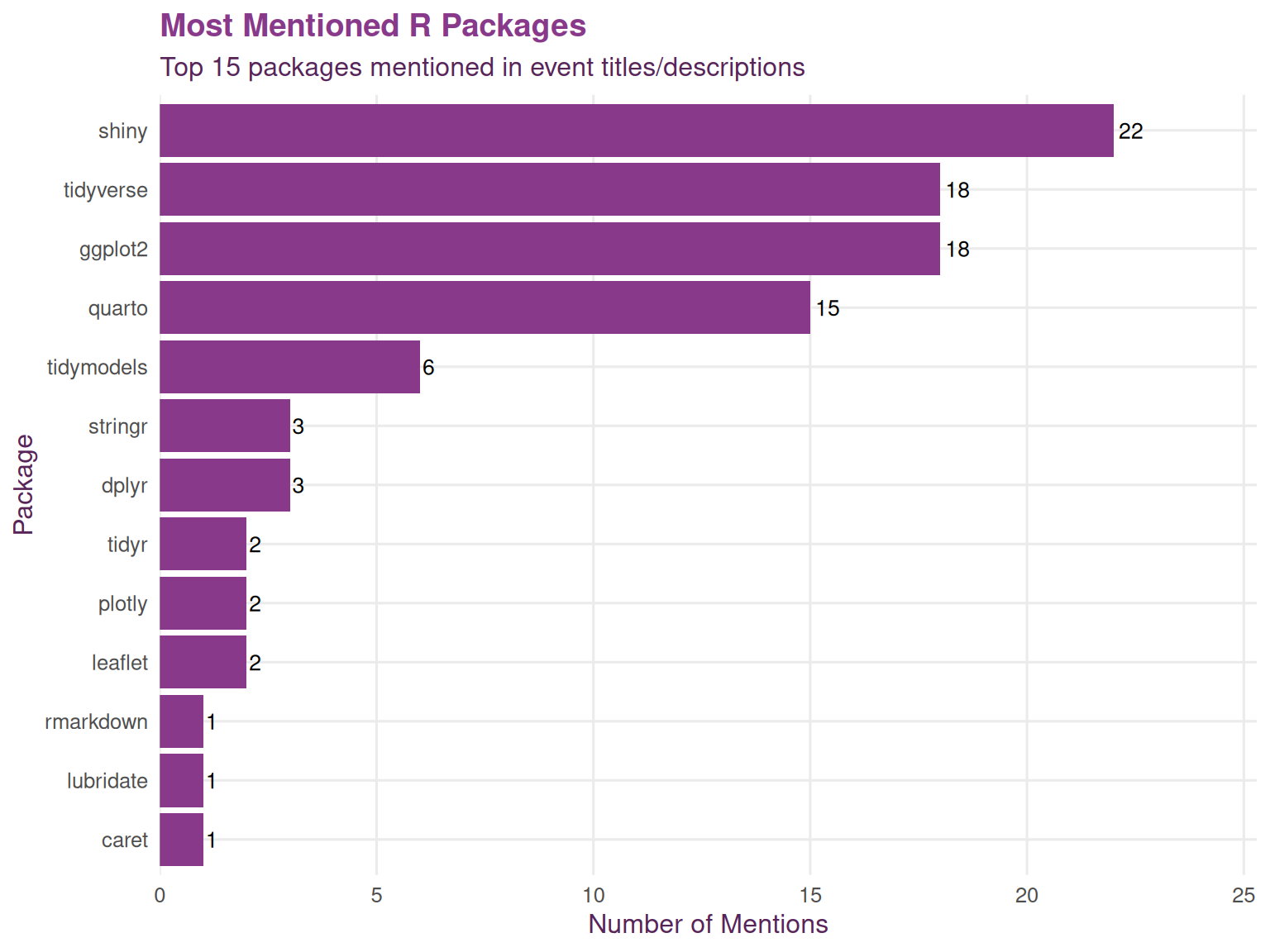
Package mention frequency often correlates with package popularity in the broader R community, but also reflects what topics organizers feel confident teaching. Core tidyverse packages typically dominate due to their fundamental role in R workflows.
Application Domains
R-Ladies events often connect R skills to specific fields or industries. Domain-specific events help members see how R applies to their professional work and build specialized knowledge communities.
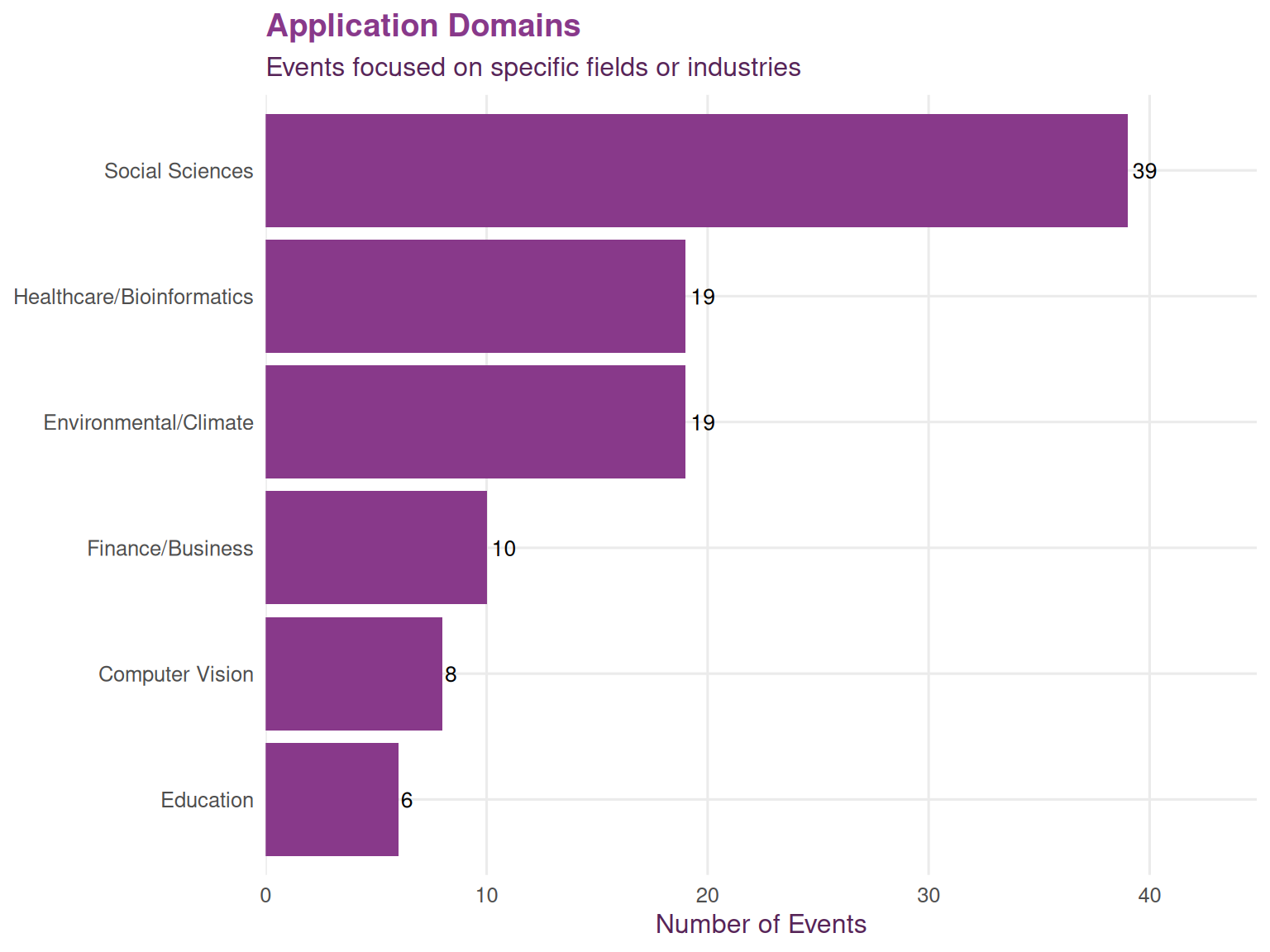
The distribution of domain-specific content reflects both the professional backgrounds of organizers and members, as well as intentional outreach to different fields. Domains with fewer events may represent growth opportunities for targeted programming.
Community and Career Events
Not all valuable programming is technical. Professional development, networking, and community-building events serve critical roles in supporting members’ careers and creating inclusive spaces.
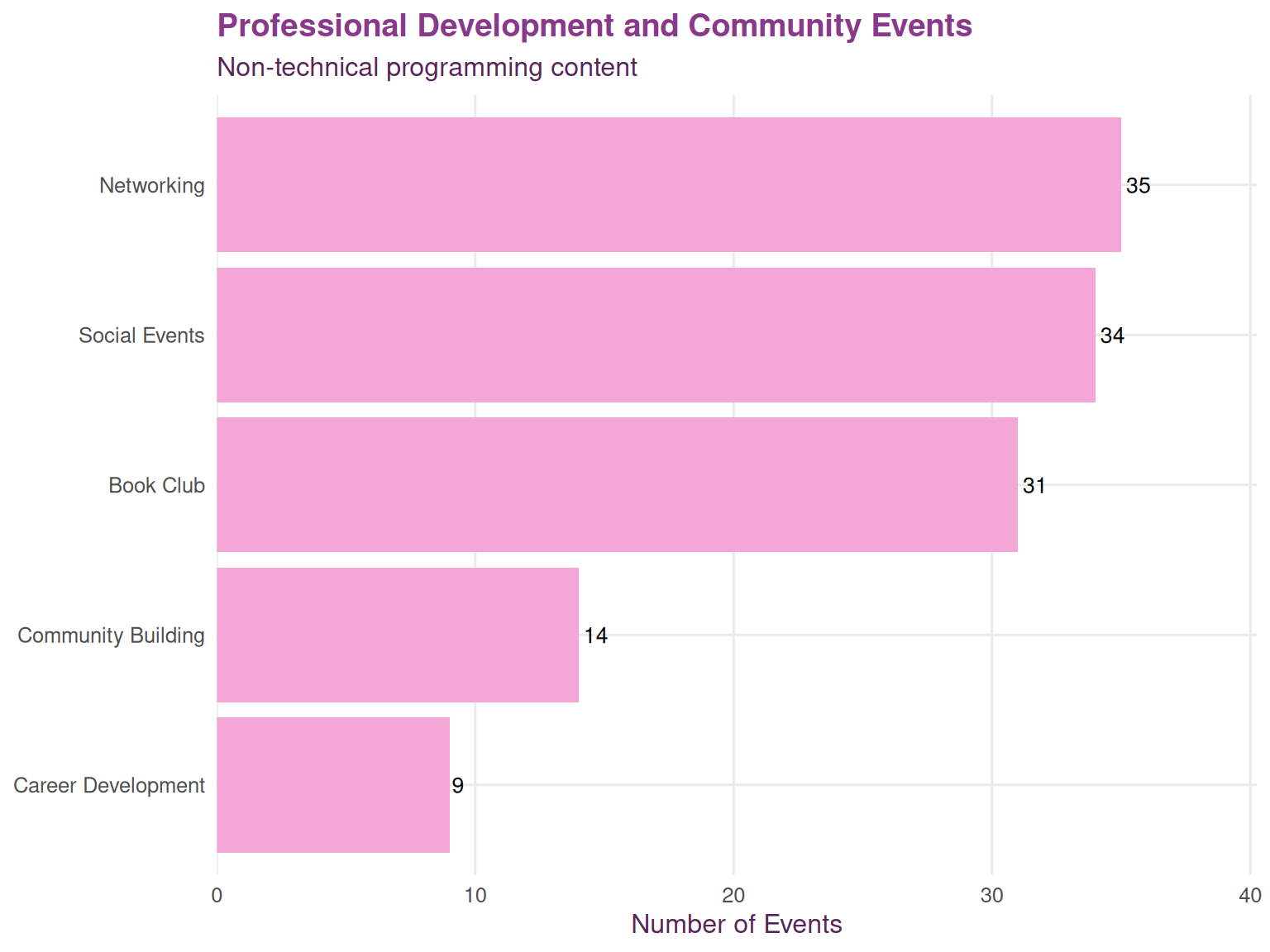
These events address the full spectrum of professional needs beyond coding skills. Career development and networking events help members advance professionally, while social events strengthen community bonds and increase retention.
Seasonal Topic Patterns
Event topics may vary by time of year, influenced by academic calendars, conference schedules, and holiday patterns. Understanding seasonal rhythms helps with strategic event planning.
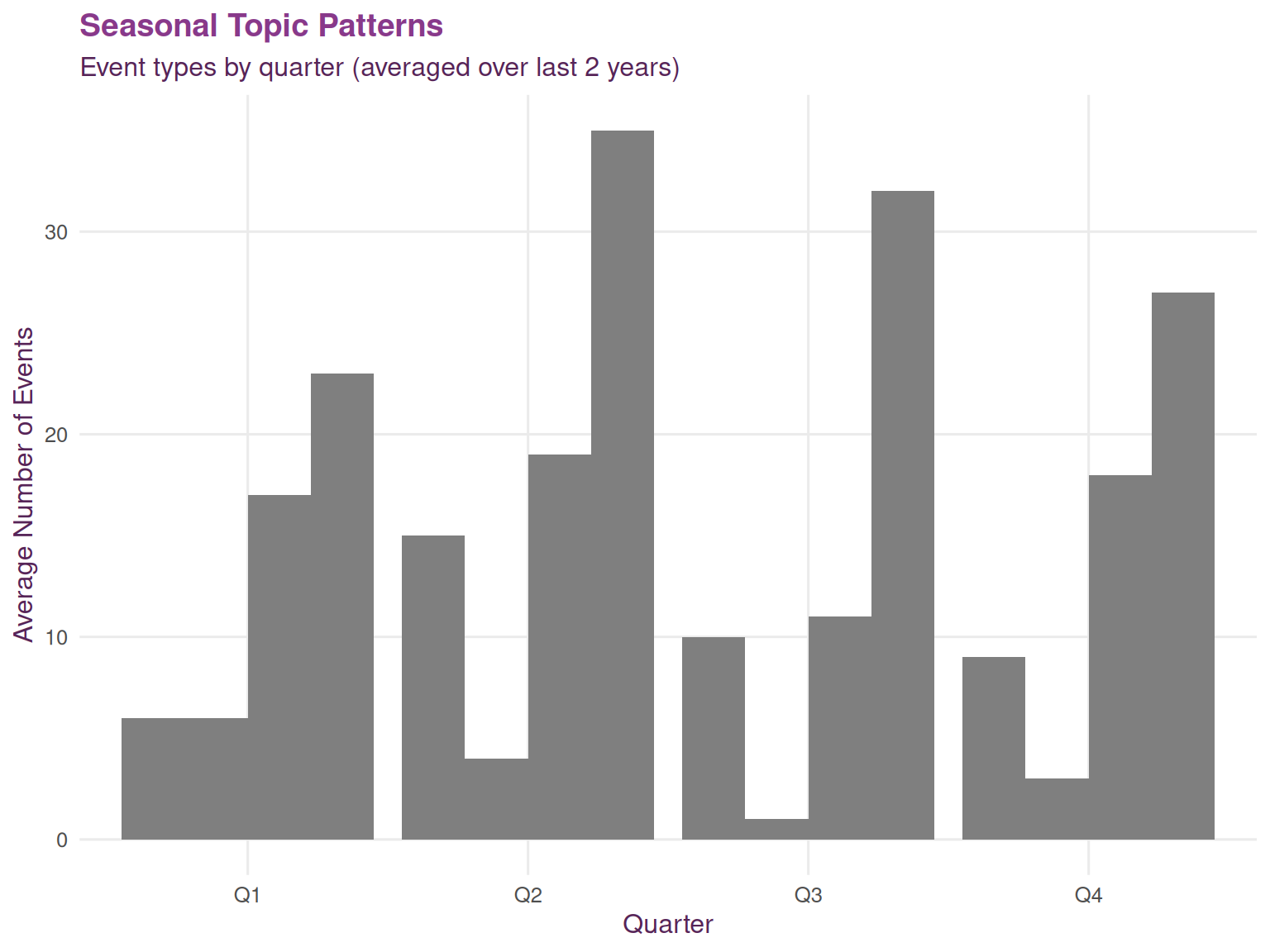
Seasonal patterns might show increased beginner content at the start of academic years, or more social events during summer months. Recognizing these patterns helps organizers align programming with predictable attendance cycles.
Content Recommendations
For Event Organizers
Most Popular Topics (high engagement):
- Data visualization (ggplot2, plotly)
- Shiny applications and dashboards
- Data wrangling with tidyverse
- Machine learning basics
- Reproducible research (Quarto, R Markdown)
Underserved Topics (opportunity areas):
- Advanced statistical methods
- Package development
- Production/deployment
- Specific domain applications
- Performance optimization
Content Mix Recommendations
Based on successful chapter patterns:
- 60-70% technical content (coding, packages, methods)
- 20-30% professional development (career, networking)
- 10-20% social/community building
- 30-40% explicitly beginner-friendly
This balance ensures technical skill development while supporting career growth and community cohesion.
Topic Diversity
Chapters with 6+ events in the last year covered a median of 22 different topic categories.
Recommendation: Aim for diverse programming to appeal to different skill levels and interests. Topic diversity helps attract and retain members with varying backgrounds and goals.
Emerging Trends
Growing in popularity:
- tidymodels
- api
- github actions
These topics show increased mentions comparing the most recent 12 months to the prior 12 months. Growing topics may reflect new tool releases, increased community interest, or improved teaching resources. Consider featuring these topics to stay current with community interests and ecosystem developments.
Report generated: 2025-10-22 22:28 UTC
Data source: R-Ladies Meetup Archive
Note: Topic detection based on keyword matching in event titles and descriptions